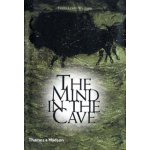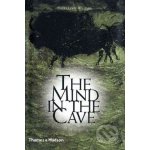Emerging from the narrow underground passages into the chambers of caves such as Lascaux, Chauvet, and Altamira, visitors are confronted with symbols, patterns, and depictions of bison, woolly mammoths, ibexes, and other animals. Since its discovery, cave art has provoked great curiosity about why it appeared when and where it did, how it was made, and what it meant to the communities that created it. David Lewis-Williams proposes that the explanation for this lies in the evolution of the human... Celý popis
Koupit za 537 Kč- Od nejoblíbenějších
- Od nejlevnějších
- Od nejdražších
 97 %
97 %
The Mind in the Cave - David Lewis-Williams
Doprava:
49 Kč
537 Kč
Koupit za 537 Kč
 86 %
86 %
Mind in the Cave
Doprava:
63 Kč
536 Kč
Koupit za 536 Kč
 90 %
90 %
Mind in the Cave
Doprava:
54 Kč
536 Kč
Koupit za 536 Kč
Popis
Emerging from the narrow underground passages into the chambers of caves such as Lascaux, Chauvet, and Altamira, visitors are confronted with symbols, patterns, and depictions of bison, woolly mammoths, ibexes, and other animals.
Since its discovery, cave art has provoked great curiosity about why it appeared when and where it did, how it was made, and what it meant to the communities that created it. David Lewis-Williams proposes that the explanation for this lies in the evolution of the human mind. Cro-Magnons, unlike the Neanderthals, possessed a more advanced neurological makeup that enabled them to experience shamanistic trances and vivid mental imagery. It became important for people to fix, or paint, these images on cave walls, which they perceived as the membrane between their world and the spirit world from which the visions came. Over time, new social distinctions
Since its discovery, cave art has provoked great curiosity about why it appeared when and where it did, how it was made, and what it meant to the communities that created it. David Lewis-Williams proposes that the explanation for this lies in the evolution of the human mind. Cro-Magnons, unlike the Neanderthals, possessed a more advanced neurological makeup that enabled them to experience shamanistic trances and vivid mental imagery. It became important for people to fix, or paint, these images on cave walls, which they perceived as the membrane between their world and the spirit world from which the visions came. Over time, new social distinctions
Parametry
| Rok vydání | 2004 |
| Autor | David J. Lewis-Williams |
| Počet stran | 320 |
| Výrobce | Thames & Hudson Ltd |
| Vazba | Brožovaná |
| Jazyk | anglické |
| Váha | 538 gramů |
| ISBN | 0500284652 |













